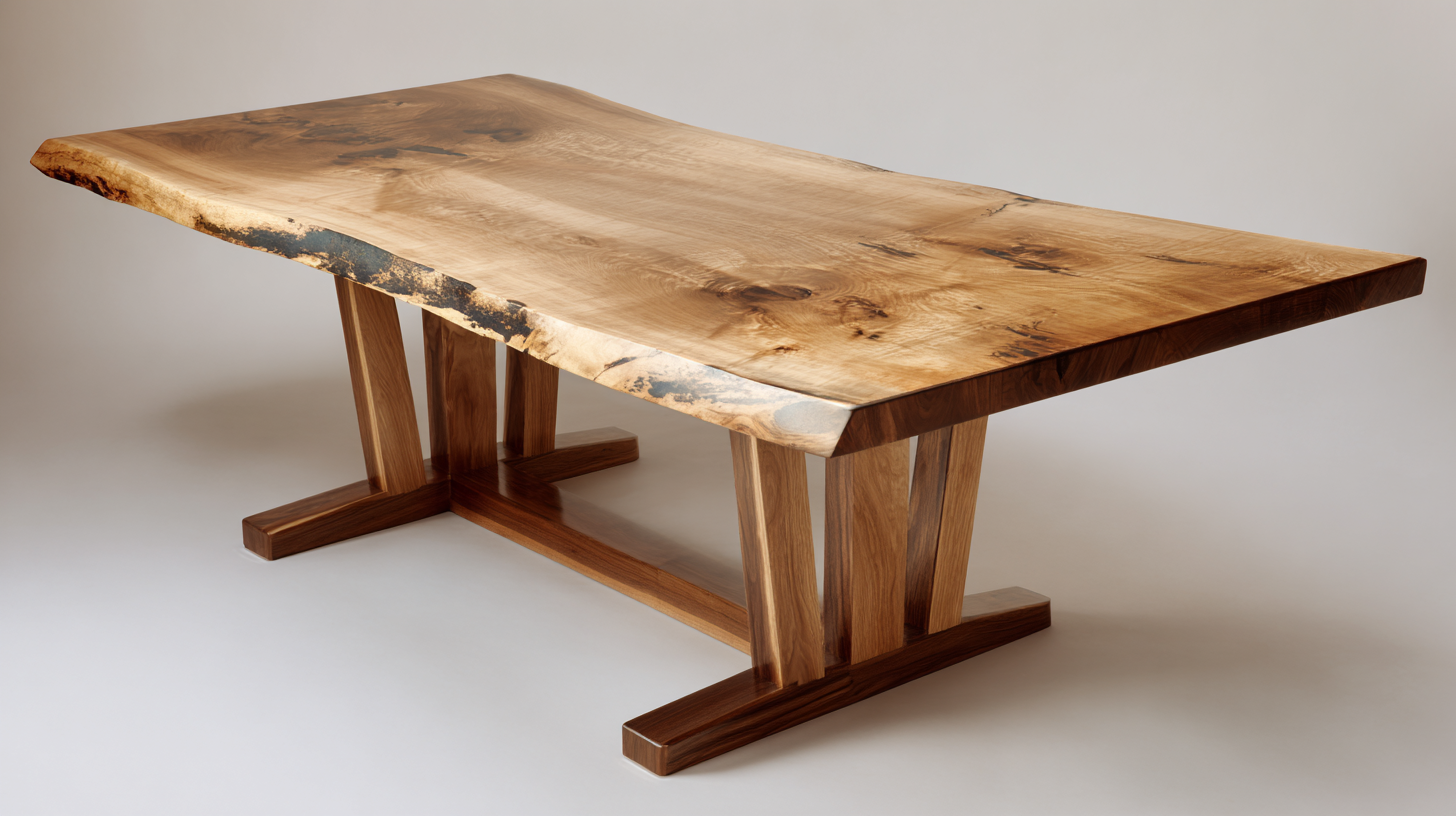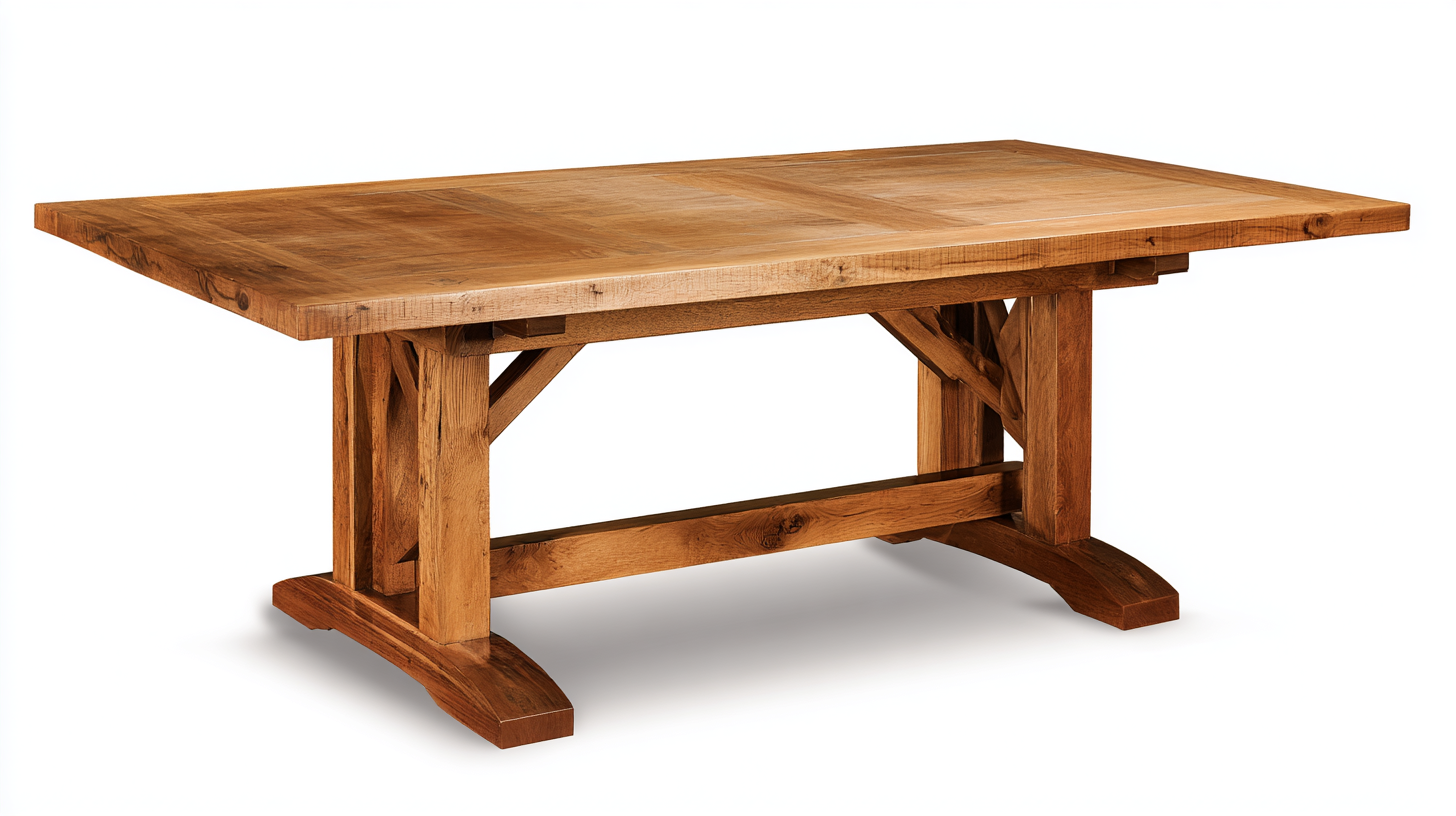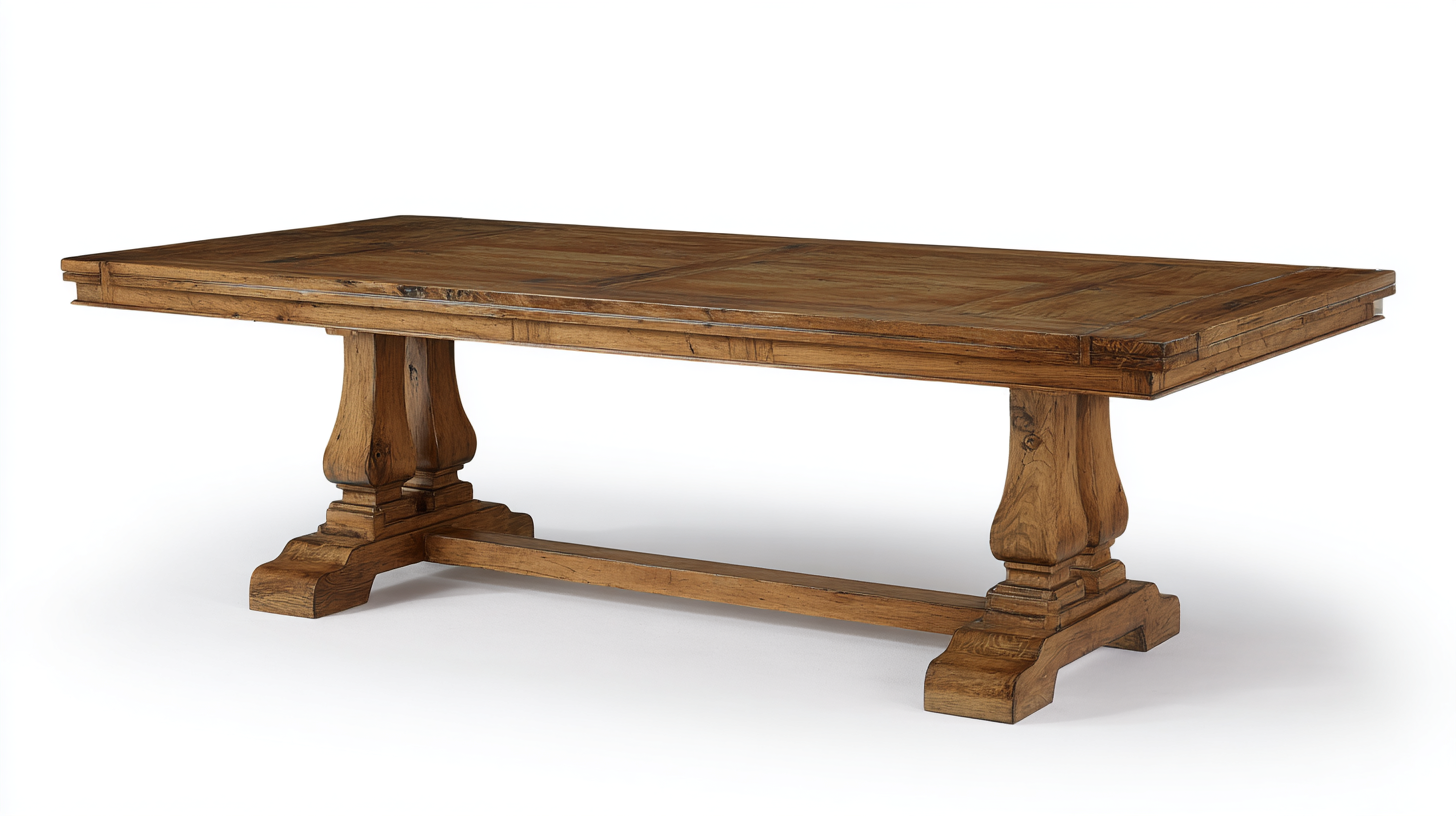
How to Choose the Perfect Solid Wood Dining Room Table for Your Space
In the realm of interior design, choosing the right furniture is paramount, particularly when it comes to solid wood dining room tables, which serve as the centerpiece for family gatherings and social interactions. According to a recent report by the International Wood Products Association, the demand for solid wood furniture has surged by 25% over the past five years, driven by consumers’ increasing preference for sustainable and durable products. Not only do solid wood dining room tables offer unmatched longevity and aesthetic appeal, but they also contribute to healthier indoor environments due to their natural materials. As Chinese manufacturing continues to lead the global market, producing an impressive 80% of the world’s wooden furniture, it’s vital for buyers to understand how to select the perfect table that complements their space while reflecting both style and functionality.

Understanding the Advantages of Solid Wood Dining Room Tables
Solid wood dining room tables are a timeless choice for those looking to enhance their dining spaces. One of the main advantages of solid wood is its durability. Unlike particle board or veneer, solid wood can withstand the wear and tear of daily use. With proper care, these tables can last for generations, making them a worthwhile investment for any home. Additionally, solid wood has an inherent strength that allows it to support heavy dishes and serve as a reliable gathering place for family and friends.
Another significant benefit of solid wood dining tables is their aesthetic appeal. Each piece is unique, showcasing the natural grains and textures of the wood, which adds character to any room. Solid wood can complement a variety of design styles, from rustic to modern, and can be stained or finished to match your existing décor. This versatility ensures that your dining table remains a focal point in your home for years to come. Furthermore, wood is a renewable resource, making it an eco-friendly option when sourced responsibly.

Identifying Your Space and Style: Size and Aesthetic Considerations
When choosing the perfect solid wood dining room table, it's essential to first identify your space and style. Start by measuring your dining area to ensure that the table fits comfortably without overwhelming the room. A good rule of thumb is to allow at least 36 inches of space around the table for easy movement. Consider the shape of your dining area as well: rectangular tables work well in long spaces, while round tables can create a cozy atmosphere in smaller rooms.
Next, pay attention to the aesthetic aspects that resonate with your personal taste. Do you lean towards a rustic charm or a sleek, modern vibe? The finish of the wood also plays a crucial role in defining the overall look of the table. Lighter woods can brighten up a space, while darker finishes provide a timeless elegance. Choosing a table that complements your dining chairs and other decor elements will create a cohesive design that reflects your personality. By thoughtfully considering both size and style, you can find a solid wood dining table that enhances your living space.
Choosing the Right Wood Type for Durability and Design
When selecting a solid wood dining room table, the type of wood you choose plays a crucial role in both durability and design. Hardwoods like oak, cherry, and maple are renowned for their strength and resilience, making them an excellent choice for a dining table that will withstand the test of time. Oak, for instance, is incredibly durable and can resist scratches and dents, while cherry offers a unique warmth and rich color that deepens over time. Each wood type brings its own character, allowing you to align the table with your interior design preferences.
In addition to durability, the grain and color of the wood can significantly influence the overall aesthetic of your dining space. Lighter woods, such as birch and pine, lend a fresh and airy feel to a room, perfect for contemporary designs. Conversely, darker woods like walnut and mahogany can add depth and sophistication, appealing to a more traditional or elegant decor. Considering the finish also matters; whether you prefer a rustic matte or a polished shine, this will affect how the table harmonizes with other elements in your dining area. By thoughtfully choosing the right wood type, you can create a dining room centerpiece that is both functional and visually stunning.
Wood Type Durability Ratings for Dining Tables
Exploring Finishes and Treatments for Enhanced Longevity
Choosing a solid wood dining room table is not just about aesthetics; it's also about ensuring that your investment lasts for generations. One of the key aspects to consider when selecting a table is the finish and treatment. Finishes not only enhance the appearance of the wood but also provide a protective barrier against spills, heat, and daily wear and tear. Popular finishes include oil, lacquer, and polyurethane, each offering varying levels of protection and visual appeal. Oil finishes penetrate the wood, providing a natural look while allowing the wood to breathe. On the other hand, lacquer and polyurethane create a harder surface, making them more resistant to scratches and stains.

When considering treatment options, it's essential to think about the environment in which the table will be used. For families with young children, a durable finish that can withstand heavy use is vital. Additionally, treatments like water repellents and UV blockers can significantly extend the life of the table by preventing warping and fading. Selecting the right finish and treatment not only enhances the beauty of a solid wood dining table but also ensures that it remains a centerpiece in your home for many years to come.
Budgeting for Quality: Balancing Cost and Value in Solid Wood Tables
When it comes to buying a solid wood dining room table, budgeting is a crucial component that requires careful consideration. Quality solid wood tables can vary dramatically in price, often influenced by the type of wood, craftsmanship, and brand reputation. It's essential to set a realistic budget that not only covers the initial purchase but also allows for the longevity and maintenance of the table. Investing in quality often means choosing pieces that stand the test of time and fit harmoniously into your space.
Balancing cost and value involves understanding what you’re paying for. While it may be tempting to opt for cheaper alternatives, these options could lead to higher costs down the line due to wear and tear. For example, solid hardwoods like oak or walnut have a durability that cheaper materials don’t offer. Researching your options, checking for warranties, and considering the table's resale value can all contribute to making an informed decision. Ultimately, finding a solid wood table that fits your budget while providing exceptional quality is key to enhancing your dining experience and ensuring satisfaction for years to come.